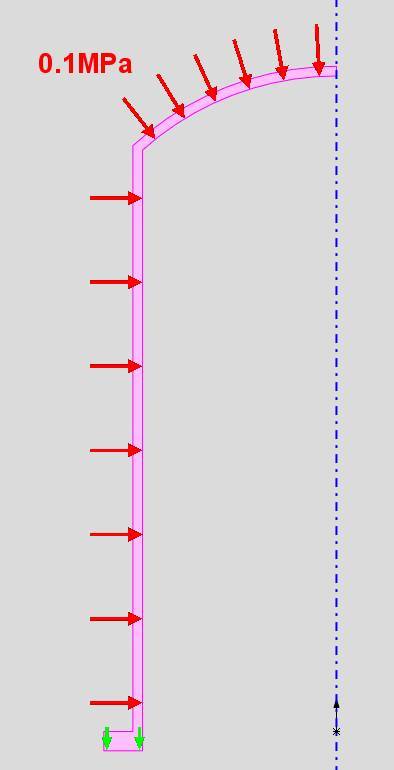Hi all,
I'm running a FEA simulation of vacuum chamber (without much experience in that area).
It's a simple thin wall chamber (axisymmetric)

I assume to represent vacuum I can just apply 0.1MPa pressure (1bar differential pressure) to the walls inwards.
Could anyone confirm if using this load is the correct approach?
Thanks

I'm running a FEA simulation of vacuum chamber (without much experience in that area).
It's a simple thin wall chamber (axisymmetric)

I assume to represent vacuum I can just apply 0.1MPa pressure (1bar differential pressure) to the walls inwards.
Could anyone confirm if using this load is the correct approach?
Thanks
